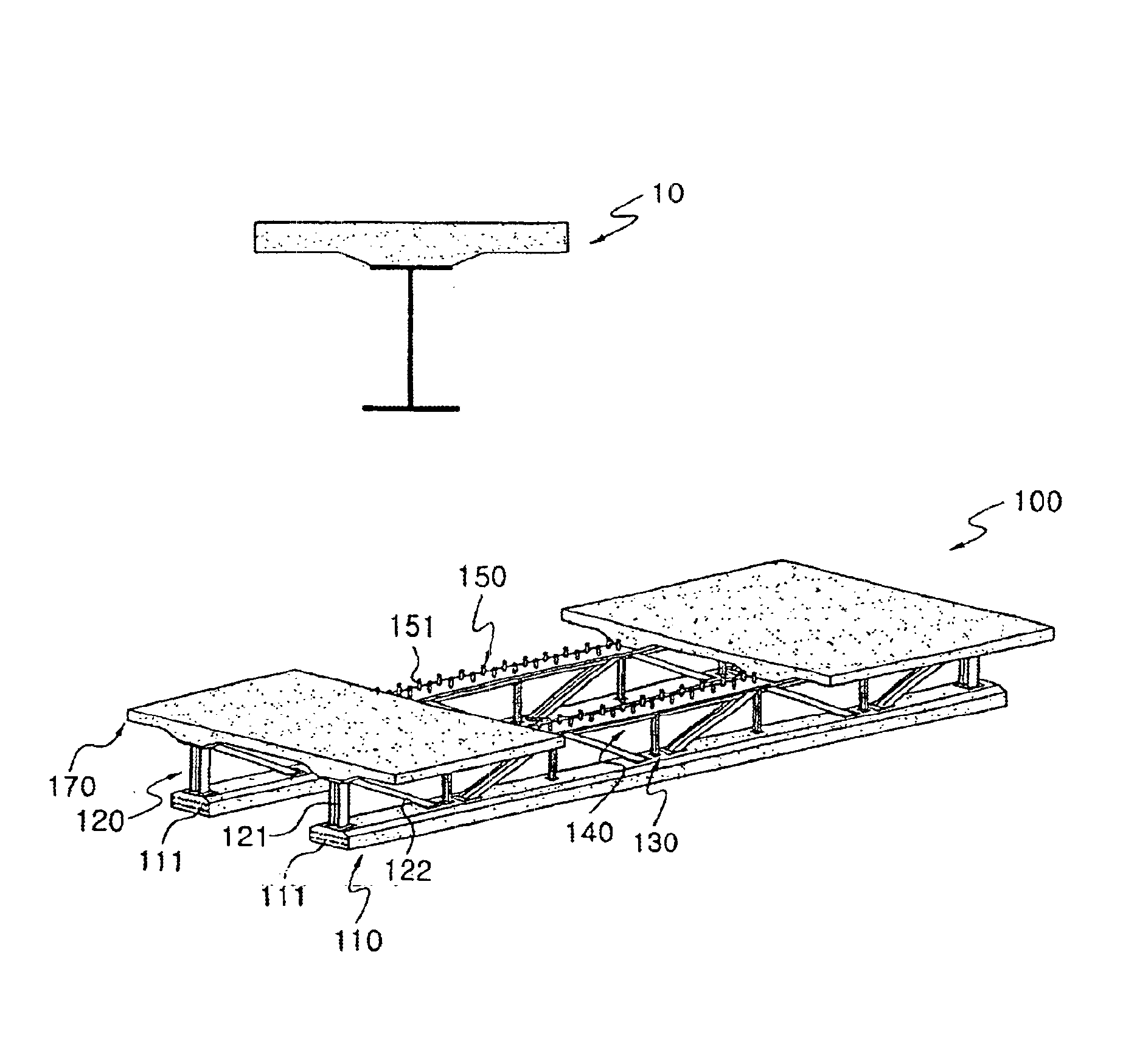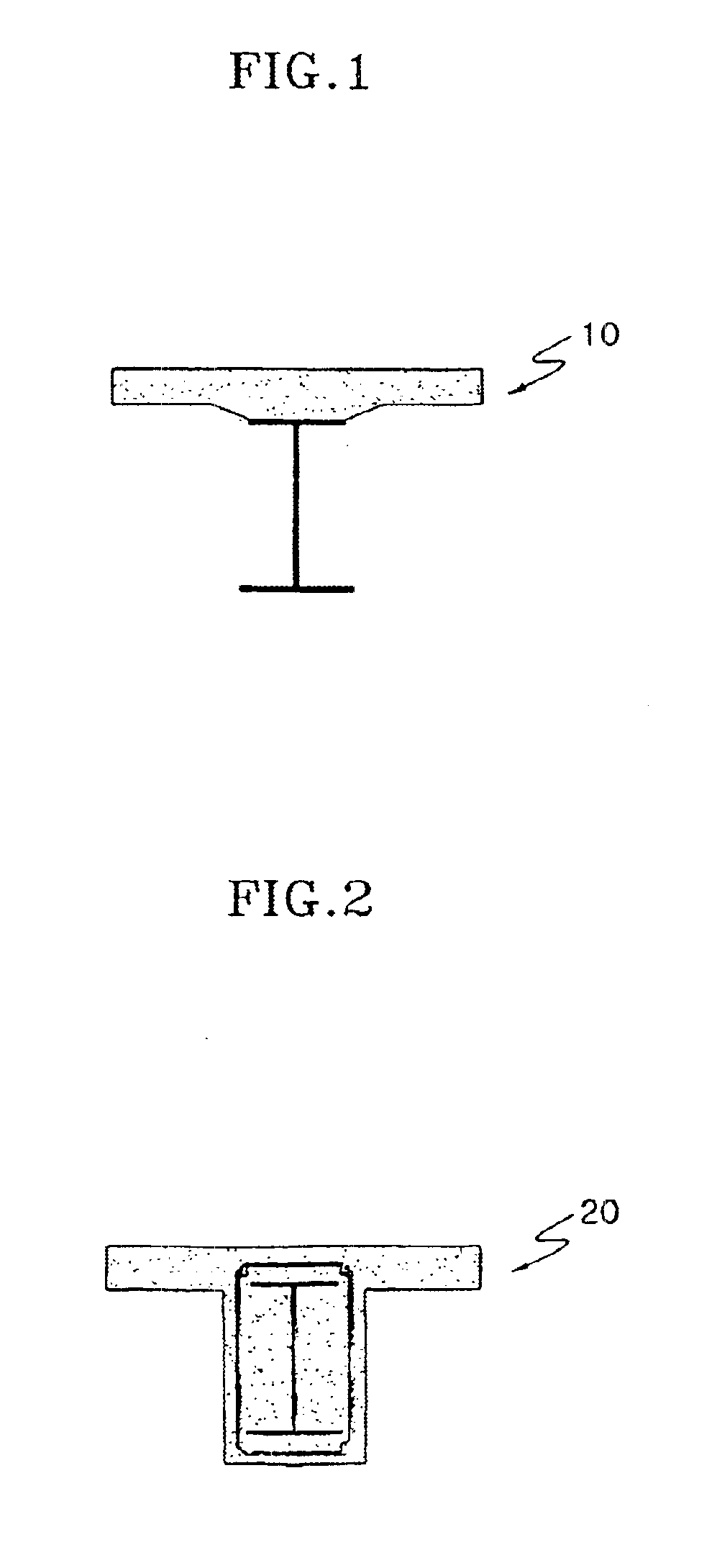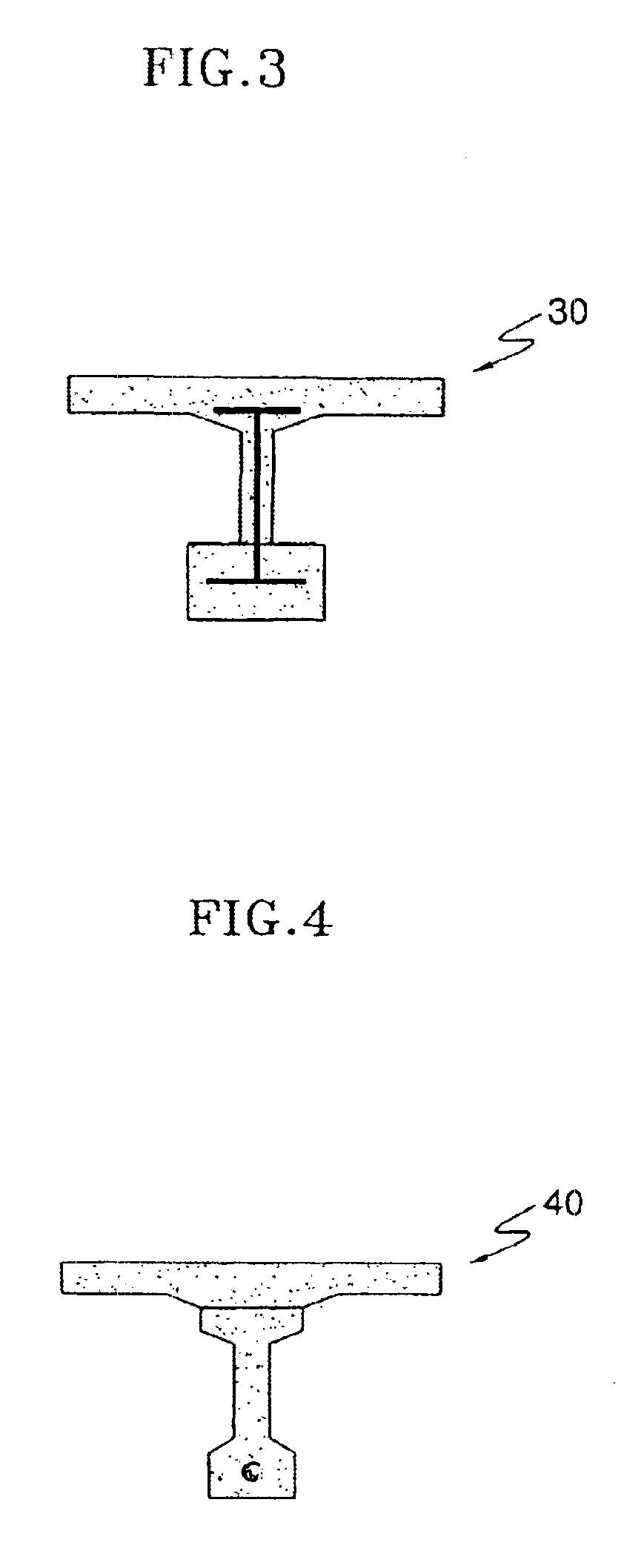However, the steel
composite girder also has disadvantages in that the material cost is high,
noise and vibration by moving loads are heavy, and maintenance and repairing cost take so much.
From this reason, the spaces under the girder often cause problems, and the economical efficiency is remarkably lowered because the amount of steel used increases extremely.
As a result, it causes extraordinary increase of the construction cost compared to the simply supported structure, and the serviceability and the durability of the
composite girder will be deteriorated by
water leakage caused from the crack of the slab concrete.
But, the SRC
composite girder is more expensive than the
reinforced concrete structure due to filled-in steel beam, and-the structural and economical efficiency are suddenly decreased when the span is longer than 30 m because the
dead weight of the structure increase rapidly.
But, the Preflex composite girder has disadvantages in that huge equipment is required to manufacture the Preflex beam, and its construction is more complicated than that of the Steel composite girder or the SRC composite girder, and the economical efficiency is low.
Further, Preflex composite girder has structural defects in that the crack of encasing concrete may occur because the prestress introduced to the encasing concrete could be drastically decreased by the
creep and shrinkage of concrete, as a result, the encasing concrete is on
cracking state under working loads.
Moreover, if the span length is longer than 50 m, there is a buckling problem of steel beam when introducing preflexing load, and the economical efficiency is remarkably decreased because the amount of steel used and the construction cost for manufacturing the beam itself sharply increases.
But, the PCS composite girder has disadvantages in that its
dead weight is heavy, and the construction process is complicated, and the
quality control for concrete is difficult.
However, the tensile stress increases rapidly due to it's heavy
dead weight as the span length increases, so the more the prestressing should be introduced, and the intensity of the introduced prestress is limited by the geometric properties because the total stress at upper
fiber of the cross-section exceeds the allowable tensile stress when the prestress is large.
As a result from above facts, sufficient prestress couldn't be introduced to the lower
fiber of cross-section, so the beam having large stiffness to
resist the tensile stress generated by dead weight of the beam and by live load, namely the high beam is required, however, this causes increase of the dead weight of the beam.
Further, the PSC composite girder has problem in that huge equipment is required for transportation and construction because lifting of the precast beam using general sized crane is impossible due to the dead weight when the span length is larger than 30 m.
Moreover, the beams used for the conventional composite girder is accompanied with many difficulties for manufacturing a certain curved structure of the plane or of the cross-section because all of them are unified
solid cross-sectional structure.
Of course, it is possible that manufacturing the member having curved structure for the steel beam, but it is not competitive compared with the member having the other
structural type because of steep increment of manufacturing cost and abrupt descent of construction efficiency due to it.
That is, an expensive steel or concrete box-type girder is more commonly used when the
object structure is a curved bridge or curved structure that could not be corresponded with a straight-line type beam than open-type composite girder.
 Login to View More
Login to View More  Login to View More
Login to View More 


